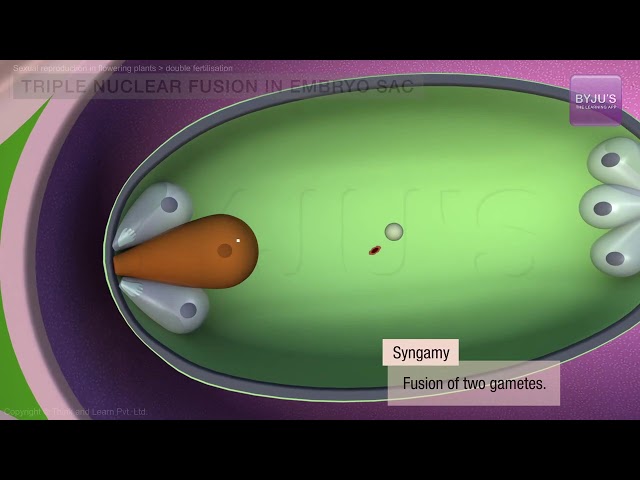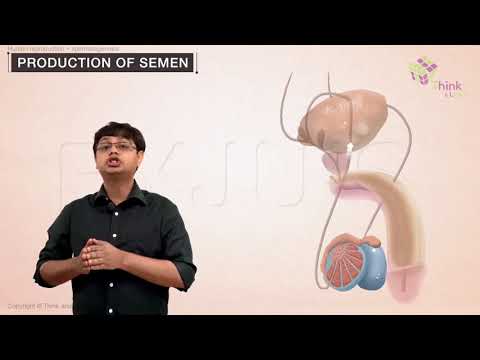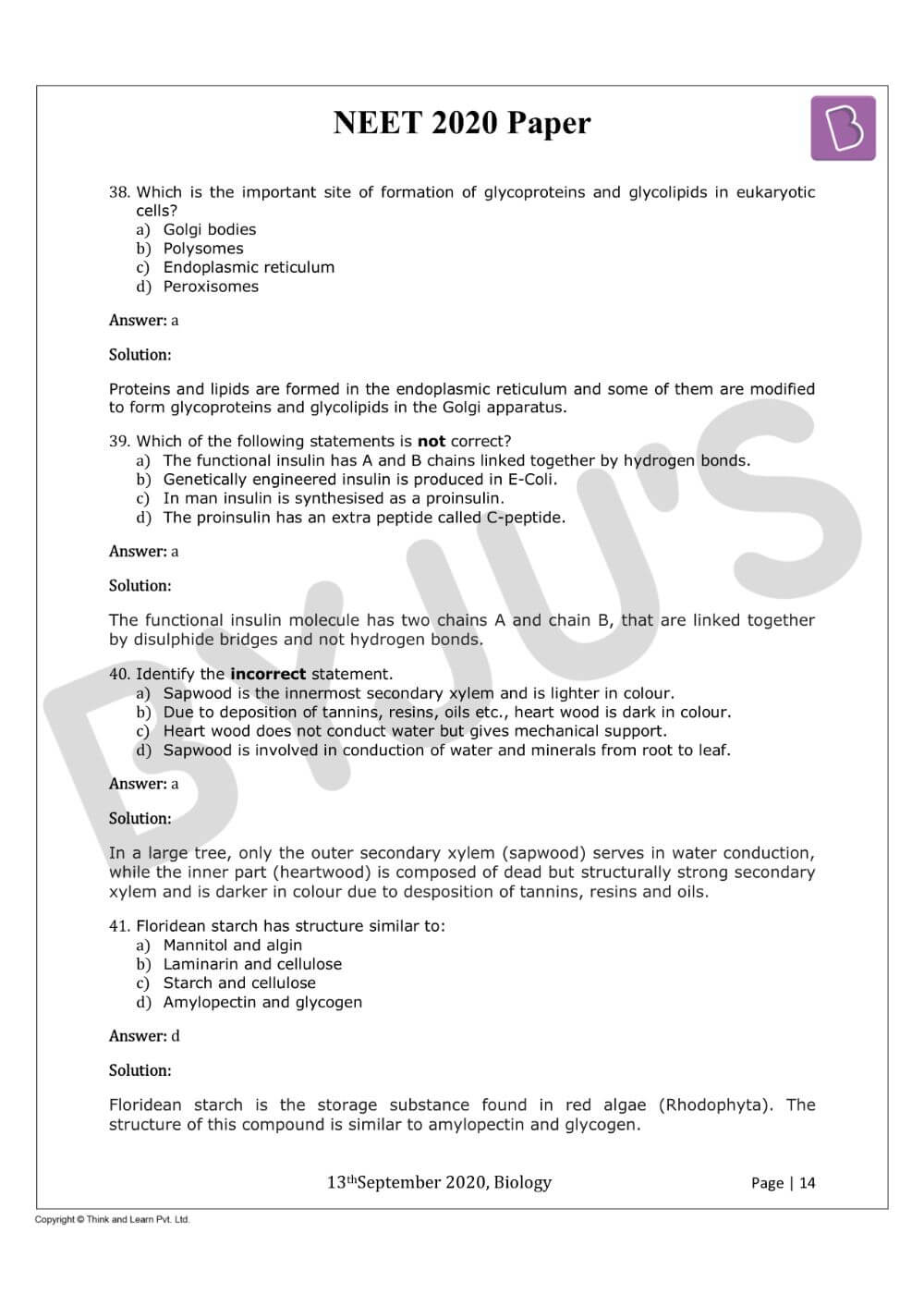NEET 2020 Question Paper with Solutions Biology Sept. 13th comprises 90 questions out of the total 180. At BYJU'S, students are provided with the best platform for learning, especially for competitive exam preparation. In view of this, the question paper of NEET is made available to students along with brief explanation for each question with solutions. This enables students to practice and comprehend every question easily, with just at a glance. Solutions for the Biology section of the NEET paper are provided with accurate answers and precise briefing for each question, equipping students with just the information required to crack that question.
NEET 2020 - Biology (Sep 13)
Question 1. Presence of which of the following conditions in urine are indicative of Diabetes Mellitus?
- a) Ketonuria and Glycosuria
- b) Renal calculi and Hyperglycemia
- c) Uremia and Ketonuria
- d) Uremia and Renal Calculi
Solution:
- a) (iii) (ii) (iv) (i)
- b) (ii) (iii) (iv) (i)
- c) (iv) (iii) (i) (ii)
- d) (i) (iv) (ii) (iii)
Solution:
- a) (ii) (iii) (iv) (i)
- b) (i) (ii) (iii) (iv)
- c) (iv) (i) (ii) (iii)
- d) (iii) (ii) (i) (iv)
Solution:
- a) Palindromic sequence
- b) Recognition site
- c) Selectable marker
- d) Ori site
Solution:
- a) (iv) (ii) (iii) (i)
- b) (i) (iv) (iii) (ii)
- c) (ii) (iii) (iv) (i)
- d) (iii) (iv) (i) (ii)
Solution:
- a) ICSI and ZIFT
- b) GIFT and ICSI
- c) ZIFT and IUT
- d) GIFT and ZIFT
Solution:
- a) (a), (b) and (d)
- b) Only (d)
- c) (a) and (b)
- d) (c) and (d)
Solution:
- a) Depolarization of ventricles
- b) Repolarization of ventricles
- c) Repolarization of auricles
- d) Depolarization of auricles
Solution:
- a) Caseinogen into casein
- b) Pepsinogen into pepsin
- c) Protein into polypeptides
- d) Trypsinogen into trypsin
Solution:
- a) Ileum is a highly coiled part
- b) Vermiform appendix arises from duodenum
- c) Ileum opens into small intestine
- d) Serosa is the innermost layer of the alimentary canal.
Solution:
- a) Hypogynous ovary
- b) Half inferior ovary
- c) Inferior ovary
- d) Superior ovary
Solution:
- a) Effluents of primary treatment
- b) Activated sludge
- c) Primary sludge
- d) Floating debris
Solution:
- a) Two
- b) Three
- c) Zero
- d) One
Solution:
- a) Cell is metabolically active, grows but does not replicate its DNA
- b) Nuclear division takes place
- c) DNA synthesis or replication takes place
- d) Reorganization of all cell components takes place
Solution:
- a) Anabaena and volvox
- b) Chlorella and spirulina
- c) Laminaria and Sargossum
- d) Gelidium and Gracilaria
Solution:
- a) Active immunity is quick and gives full response
- b) Fetus receives some antibodies from mother, it is an example for passive immunity
- c) When exposed to antigen (living or dead) antibodies are produced in the host’s body. It is called “Active immunity”
- d) When readymade antibodies are directly given, it is called “Passive immunity”.
Solution:
- a) (iii) (ii) (iv) (i)
- b) (iv) (iii) (i) (ii)
- c) (ii) (iv) (i) (iii)
- d) (i) (iii) (ii) (iv)
Solution:
- a) Lysine
- b) Valine
- c) Tyrosine
- d) Glutamic acid
Solution:
- a) (c) and (d)
- b) (a) and (d)
- c) (a) only
- d) (b) only
Solution:
- a) Higher H+ conc. in alveoli favors the formation of oxyhemoglobin
- b) Low pCO2 in alveoli favors the formation of oxyhemoglobin
- c) Binding of oxygen with hemoglobin is mainly related to partial pressure of O2
- d) Partial pressure of CO2 can interfere with O2 binding with hemoglobin.
Solution:
- a) (iv) (ii) (i) (iii)
- b) (i) (ii) (iv) (iii)
- c) (ii) (iii) (i) (iv)
- d) (iii) (i) (iv) (ii)
Solution:
- a) Ethylene
- b) Abscisic acid
- c) Cytokinin
- d) Gibberellin
Solution:
- a) Prop roots
- b) Lateral roots
- c) Fibrous roots
- d) Primary roots
Solution:
- a) The head holds a small proportion of a nervous system while the rest is situated along the ventral part of its body.
- b) The head holds a 1/3rd of a nervous system while the rest is situated along the dorsal part of its body.
- c) The supra-oesophageal ganglia of the cockroach are situated in ventral part of abdomen.
- d) The cockroach does not have nervous system.
Solution:
- a) Marchantia
- b) Equisetum
- c) Salvinia
- d) Pteris
Solution:
- a) Diplotene
- b) Leptotene
- c) Pachytene
- d) Zygotene
Solution:
- a) (ii) (i) (iii) (iv)
- b) (iv) (i) (ii) (iii)
- c) (i) (iii) (ii) (iv)
- d) (iii) (iv) (i) (ii)
Solution:
- a) Aminoacylation of tRNA
- b) Recognition of an anti-codon
- c) Binding of mRNA to ribosome
- d) Recognition of DNA molecule
Solution:
- a) (i) (ii) (iv) (iii)
- b) (iv) (iii) (ii) (i)
- c) (iii) (iv) (ii) (i)
- d) (ii) (i) (iv) (iii)
Solution:
- a) 1 molecule of 6-C compound
- b) 1 molecule of 4-C compound and 1 molecule of 2-C compound
- c) 2 molecules of 3-C compound
- d) 1 molecule of 3-C compound
Solution:
- a) (iii) (iv) (ii) (i)
- b) (iv) (i) (ii) (iii)
- c) (ii) (i) (iv) (iii)
- d) (iv) (iii) (ii) (i)
Solution:
- a) DNA polymerase
- b) RNA polymerase
- c) DNA ligase
- d) DNA helicase
Solution:
- a) CH4, H2, NH3 and water vapor at 600°C
- b) CH3, H2, NH3 and water vapor at 600°C
- c) CH4, H2, NH3 and water vapor at 800°C
- d) CH3, H2, NH4 and water vapor at 800°C
Solution:
- a) Chondrocytes
- b) Compound epithelial cells
- c) Squamous epithelial cells
- d) Columnar epithelial cells
Solution:
- a) proximal convoluted tubule of nephron
- b) Eustachian tube
- c) lining of intestine
- d) ducts of salivary glands
Solution:
- a) PS-I to NADP+
- b) PS-I to ATP synthase
- c) PS-II to Cytb6f complex
- d) Cytb6complex to PS-I
Solution:
- a) 2.2 meters
- b) 2.7 meters
- c) 2.0 meters
- d) 2.5 meters
Solution:
- a) Golgi bodies
- b) Polysomes
- c) Endoplasmic reticulum
- d) Peroxisomes
Solution:
- a) The functional insulin has A and B chains linked together by hydrogen bonds.
- b) Genetically engineered insulin is produced in E-Coli.
- c) In man insulin is synthesized as a pro-insulin
- d) The pro-insulin has an extra peptide called C-peptide.
Solution:
- a) Sapwood is the innermost secondary xylem and is lighter in colour.
- b) Due to deposition of tannins, resins, oils etc., heart wood is dark in colour.
- c) Heart wood does not conduct water but gives mechanical support.
- d) Sapwood is involved in conduction of water and minerals from root to leaf.
Solution:
- a) Mannitol and algin
- b) Laminarin and cellulose
- c) Starch and cellulose
- d) Amylopectin and glycogen
Solution:
- a) (i) (ii) (iv) (iii)
- b) (ii) (iv) (iii) (i)
- c) (iii) (iv) (i) (ii)
- d) (iv) (iii) (ii) (i)
Solution:
- a) (i) (ii) (iv) (iii)
- b) (ii) (i) (iii) (iv)
- c) (iii) (iv) (ii) (i)
- d) (iv) (i) (ii) (iii)
Solution:
- a) senescence
- b) dormancy
- c) log phase
- d) lag phase
Solution:
- a) (iii) (iv) (i) (ii)
- b) (ii) (iii) (i) (iv)
- c) (ii) (iv) (iii) (i)
- d) (iii) (i) (iv) (ii)
Solution:
- a) S phase
- b) G2 Phase
- c) M phase
- d) G1 phase
Solution:
- a) Atrial natriuretic factor causes vasoconstriction
- b) Decrease in secretion of renin by JG cells
- c) More water reabsorption due to undersecretion of ADH
- d) Reabsorption of Na+ and water from renal tubules due to aldosterone
Solution:
- a) They have DNA with protein coat.
- b) They have free DNA without protein coat.
- c) They have RNA with protein coat.
- d) They have free RNA without protein coat.
Solution:
- a) Female gametocytes
- b) Male gametocytes
- c) Trophozoites
- d) Sporozoites
Solution:
- a) Adenine pairs with thymine through three H-bonds.
- b) Adenine does not pair with thymine.
- c) Adenine pairs with thymine through two H-bonds.
- d) Adenine pairs with thymine through one H-bond.
Solution:
- a) Industrial melanism
- b) Natural selection
- c) Adaptive radiation
- d) Convergent evolution
Solution:
- a)Release of Green House gases
- b)Disposal of e-wastes
- c)Transport of Genetically modified organisms from one country to another
- d)Emission of ozone depleting substances
Solution:
- a) They are useful in genetic engineering.
- b) Sticky ends can be joined by using DNA ligases.
- c) Each restriction enzyme functions by inspecting the length of a DNA sequence.
- d) They cut the strand of DNA at palindromic sites.
Solution:
- a)Cross breeding
- b)Inbreeding
- c)Out crossing
- d)Mutational breeding
Solution:
- a) (b), (c) & (d)
- b) only (d)
- c) only (a)
- d) (a) & (c)
Solution:
- a)After zygote formation
- b)At the time of fusion of a sperm with an ovum
- c)Prior to ovulation
- d)At the time of copulation
Solution:
- a) Gross primary productivity and Net primary productivity are one and same.
- b) There is no relationship between Gross primary productivity and Net primary productivity
- c) Gross primary productivity is always less than Net primary productivity.
- d) Gross primary productivity is always more than Net primary productivity.
Solution:
- a) When IA and IB are present together, they express same type of sugar.
- b) Allele ‘i’ does not produce any sugar.
- c) The gene (I) has three alleles.
- d) A person will have only two of the three alleles.
Solution:
- a)(iii) (i) (iv) (ii)
- b)(ii) (i) (iv) (iii)
- c)(iv) (iii) (i) (ii)
- d)(iii) (ii) (i) (iv)
Solution:
- a) 50 million
- b) 7 million
- c) 1.5 million
- d) 20 million
Solution:
- a) Nucellus
- b) Chalaza
- c) Hilum
- d) Micropyle
Solution:
- a)(iii) (ii) (i) (iv)
- b)(ii) (i) (iii) (iv)
- c)(i) (iii) (ii) (iv)
- d)(iv) (i) (ii) (iii)
Solution:
- a)Charles Darwin
- b)Oparin
- c)Karl Ernst von Baer
- d)Alfred Wallace
Solution:
- a)(iii) (ii) (iv) (i)
- b)(iii) (iv) (i) (ii)
- c)(ii) (iv) (iii) (i)
- d)(iv) (iii) (i) (ii)
Solution:
- a)Phenolic acid
- b)Para - ascorbic acid
- c)Gibberellic acid
- d)Abscisic acid
Solution:
- a)They lie free in the cytoplasm
- b)These represent reserve material in cytoplasm.
- c)They are not bound by any membrane.
- d)These are involved in ingestion of food particles.
Solution:
- a)Sunflower
- b)Plum
- c)Brinjal
- d)Mustard
Solution:
- a)(iv) (iii) (ii) (i)
- b)(i) (ii) (iii) (iv)
- c)(ii) (iii) (iv) (i)
- d)(iii) (ii) (i) (iv)
Solution:
- a)Imbibition
- b)Plasmolysis
- c)Transpiration
- d)Root Pressure
Solution:
- a)Nucleases - Separate the two strands of DNA
- b)Exonucleases - Make cuts at specific positions within DNA
- c)Ligases - Join the two DNA molecules
- d)Polymerases - Break the DNA into fragments
Solution:
- a)Dicotyledonous stem
- b)Dicotyledonous root
- c)Monocotyledonous stem
- d)Monocotyledonous root
Solution:
- a)Boveri
- b)Morgan
- c)Mendel
- d)Sutton
Solution:
- a)Plant nematodes
- b)Insect predators
- c)Insect pests
- d)Fungal diseases
Solution:
- a)Insulin acts on pancreatic cells and adipocytes.
- b)Insulin is associated with hyperglycemia.
- c)Glucocorticoids stimulate gluconeogenesis.
- d)Glucagon is associated with hypoglycemia.
Solution:
- a)5’- CTTAAG -3’, 3’GAATTC - 5’
- b)5’- GGATCC - 3’, 3’- CCTAGG - 5’
- c)5’- GAATTC - 3’, 3’ -CTTAAG - 5’
- d)5’ - GGAACC - 3’, 3’ - CCTTGG - 5’
Solution:
- a)Cellulose, lecithin
- b)Inulin, Insulin
- c)Chitin, cholesterol
- d)Glycerol, trypsin
Solution:
- a)Ammonia and oxygen
- b)Ammonia and hydrogen
- c)Ammonia alone
- d)Nitrate alone
Solution:
- a)Low concentration of LH
- b)Low concentration of FSH
- c)High concentration of Estrogen
- d)High concentration of Progesterone
Solution:
- a)(a) and (b)
- b)(b) and (c)
- c)(d) and (c)
- d)(c) and (a)
Solution:
- a)Aschelminthes
- b)Annelida
- c)Ctenophora
- d)Platyhelminthes
Solution:
- a)Himalayas
- b)Amazon forests
- c)Western Ghats of India
- d)Madagascar
Solution:
- a)Sickle cell anaemia - Autosomal recessive trait, chromosome - 11
- b)Thalassemia - X linked
- c)Haemophilia - Y linked
- d)Phenylketonuria - Autosomal dominant trait
Solution:
- a)Lectin
- b)Insulin
- c)Hemoglobin
- d)Collagen
Solution:
- a)AIDS, Malaria, filaria
- b)Cancer, AIDS, syphilis
- c)Gonorrhoea, Syphilis, Genital Herpes
- d)Gonorrhoea, Syphilis, Genital Herpes
Solution:
- a)wind and water
- b)insects and water
- c)insects or wind
- d)water currents only
Solution:
- a)Acetocarmine in UV radiation
- b)Ethidium bromide in infrared radiation
- c)Acetocarmine in bright blue light
- d)Ethidium bromide in UV radiation
Solution:
- a)defense action
- b)effect on reproduction
- c)nutritive value
- d)growth response
Solution:
- a)14
- b)8
- c)4
- d)2
Solution:
- a)Mortality
- b)Species interaction
- c)Sex ratio
- d)Natality
Solution:
- a)High reflection of light from snow
- b)Damage of retina caused by infra -red rays
- c)Freezing of fluids in the eye by low temperature
- d)Inflammation of cornea due to high dose of UV - B radiation
Solution:



































